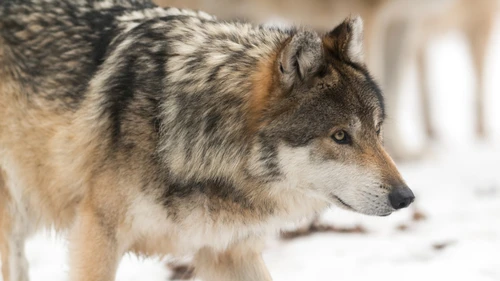
A pack of gray wolves, which are endangered in Washington, is about to be killed by the state’s Department of Fish and Wildlife, the agency confirmed last week. One of just 19 packs in the entire state, the wolves will be tracked and shot because they killed about a dozen cattle this summer.
Under state law, if wolves kill four or more cattle in one year, the agency can take lethal action. Two of the pack’s wolves were already shot on August 5 after a number of cattle were killed. The WDFW was hopeful that would scare the pack away from areas with humans, but a few weeks later the livestock attacks started again. Now, the pack’s remaining nine wolves—including four cubs—are on the hit list.
“It’s very frustrating and disappointing and saddening that we’re at this point, but we reluctantly agreed that, in some instances, if wolf depredation of livestock continues, lethal removal is the tool of last resort,” said Shawn Cantrell, a member of the state’swolf advisory group and the Northwest program director for Defenders of Wildlife, a conservation nonprofit. “So that’s where we’re at in this situation.”
It may seem like an overreaction to eliminate 10 percent of the entire state’s endangered wolf population—there are an estimated 90 wolves in Washington—in order to stop the killing of a handful of cows, especially when you consider the state ishome to millions of cattle. And plenty of people are arguing against it: Cantrell told me he’s fielding many “very heated phone calls,” over the last few days, and groups like the tribal-led Protect the Wolves are speaking out against the cull.
“If you can build a social acceptance, it actually means that fewer wolves will be killed.”
Eliminating this pack is also no guarantee that other livestock will be spared: a new pack could move into this territory and do the same thing. But as is so often the case when wildlife conservation starts to become an inconvenience for humans, this decision was more political than practical.
Cantrell told me he and other conservationists on the wolf advisory committee believe killing this one pack won’t significantly hinder the ongoing species recovery efforts. But not responding to the livestock attacks could.
“If there’s a sense in some of these rural communities that there’s no recourse for the chronic, ongoing killing of their cows or sheep killed by wolves, then their willingness to do any kind of collaborative, positive work with the agency and to use nonlethal tools evaporates,” Cantrell said.
Washington state has done a lot of work to try to recover the gray wolf species while also fostering public support, a difficult task in a state where about a third of the landis used for farming. In 2008, there was just one pack of five wolves in the state. Since then, the population has grown by an average of 36 percent every year. A big part of that recovery stems from working with ranchers to find nonlethal ways to keep the wolves at bay, such as guard dogs and starter pistols. Cantrell told me they’re increasingly warming up to these ideas as public acceptance of the wolves grows.
“It isn’t as uniform across all livestock operations as it can be and as we want to see it, but it is dramatically more accepted as a way of ranching than it was even two years ago,” Cantrell said. “That’s where I take heart. We can avoid many of these situations as we go forward.”
That’s why he thinks it’s crucial to keep that public support growing, and ignoring lost livestock threatens that support,. If the public isn’t on board with protecting a species, political support will dry up, and that’s something the conservation team isn’t willing to risk.
“If you can build a social acceptance, it actually means that fewer wolves will be killed and the recovery is more likely to go smoothly and quickly,” Cantrell said. “While those individual wolves will be killed, it is a basis for preventing the unravelling of public support for recovery as a whole.”